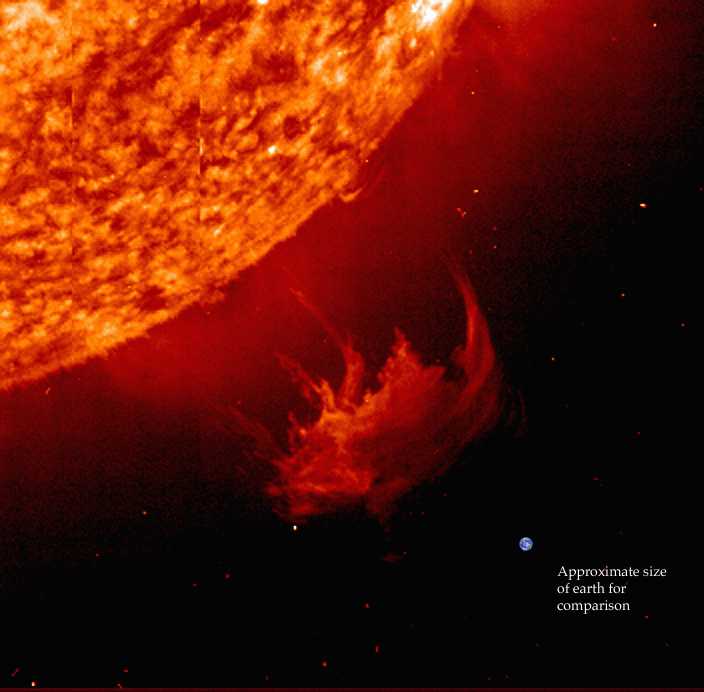
CORONAL MASS EJECTIONS (CMEs)
If the solar wind is the sun's constant breath of
plasma, a coronal mass ejection is the sun hocking
loogies...or projectile vomiting.
"The frequency of CMEs varies with the sunspot cycle. At solar minimum we observe about one CME a week. Near solar maximum we observe an average of 2-3 CMEs per day. " [11] We are just finishing the 2013-2014 solar maximum. Approximately every 11 years, the sun experiences a maximum of magnetic activity that correlates with a magnetic field pole shift. Sunspots are dark patterns on the sun's surface where strong magnetic fields are funneling up or down. Since the sun rotates, the sunspots rotate back into earth view every 27 days, giving the sunspots multiple opportunities to get in earthward volleys. [12] Usually sunspots are just north and south of the sun's equator.
http://www.fromquarkstoquasars.com/cme-the-storm-of-the-century/